The Dong Nai River is one of Vietnam’s most important waterways, running 586 kilometers from the Central Highlands to the East Sea. This river not only provides water for agricultural and industrial activity, but it also acts as a doorway to the natural beauty of Vietnam.
In this article, we will look at the Dong Nai River’s importance as a crucial resource for the Vietnamese economy, as a cultural heritage site, and the myriad attractions that make it a must-see destination for nature lovers and adventure seekers.
Contents
Exploring the Rich History and Geography of Vietnam’s Dong Nai River
The Dong Nai River has become a renowned tourist destination for travelers worldwide due to its stunning sceneries, diversified flora and fauna, and cultural heritage sites.
The Dong Nai River has a long history and cultural significance in Vietnam. For ages, the river has been used for transportation, fishing, and irrigation, and it has played an essential part in the country’s economy. The river is particularly well-known for its involvement in the Vietnam War when it served as a vital supply and troop transportation route.
Geographically, The Dong Nai River begins in Vietnam’s Central Highlands and travels through numerous provinces before draining into the East Sea. It is 586 kilometers long and travels through Lam Dong, Dak Nong, Binh Phuoc, Dong Nai, and Ho Chi Minh City. The river’s headwaters are in the Bidoup Nui Ba National Park, traveling through a diverse terrain of forests, mountains, and plains.

The Dong Nai River is also home to distinct flora and fauna, including rare and endangered species such as the Siamese crocodile and the Javan rhinoceros (the last rhino died in 2011). Additionally, the river is home to several cultural heritage sites, including temples, pagodas, and ancient ruins. These sites provide insight into the region’s history and showcase Vietnam’s rich cultural heritage.
In the following sections, we will delve deeper into the Dong Nai River’s economic and cultural significance and the various attractions that make it a popular tourism destination.
Join us on an exhilarating expedition along Vietnam’s majestic Mekong River.
The Vital Role of Vietnam’s Dong Nai River in its Culture, Economy, and Environment
The Dong Nai River is vital to the Vietnamese economy since it provides water for agriculture, industry, and drinking. The water from the river is utilized to irrigate crops such as rice, coffee, and rubber, all of which are important exports for the country. Furthermore, the river supplies water for industrial activities such as manufacturing and electricity generation.
The Dong Nai River is also crucial to transportation, acting as a key inland waterway in the region. The river is over 300 kilometers long and conveys coal, petroleum, and agricultural supplies. This transportation system is critical for economic development since it offers a low-cost, environmentally friendly alternative to road and rail transit.
Regarding energy generation, the Dong Nai River is home to various hydroelectric power facilities that create electricity for the surrounding area. These power facilities use the river’s flow to generate clean, renewable energy, lessening Vietnam’s reliance on fossil resources.
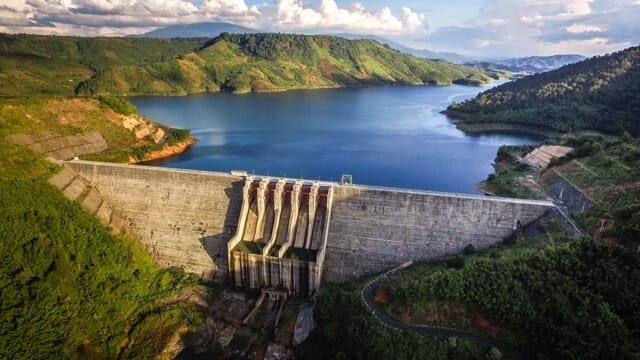
Furthermore, the Dong Nai River’s economic importance goes beyond the region because it is linked to worldwide commerce routes. The river connects to the Mekong River and the South China Sea (Vietnam East Sea), opening up markets in Southeast Asia and beyond.
Overall, the Dong Nai River is an essential resource for Vietnam’s economy due to its central role in agriculture, industry, transportation, and energy generation, and its continued preservation and sustainable use are critical for the country’s future development.
The Sights and Activities along the Dong Nai River
The Dong Nai River is a vital economic resource for Vietnam and a famous tourist destination due to its stunning landscapes, cultural heritage sites, and recreational opportunities. Here are some of the best places to see and things to do along the river:
- Tri An Lake: This man-made lake is located in the Dong Nai River Basin and is a popular spot for fishing, boating, and picnicking. Fishing enthusiasts can try their luck at catching striped snakehead, tilapia, and catfish, while others can rent a boat and enjoy the scenic views of the lake. Additionally, there are several picnic areas and restaurants near the lake where visitors can enjoy meals with their friends and family.
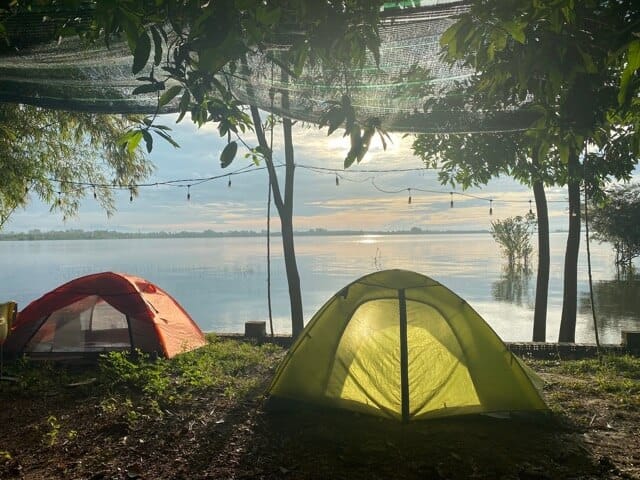
Tri An Lake – Source: Collected - Nam Cat Tien National Park: This park spans three provinces and is home to a variety of wildlife, including elephants, gibbons, and crocodiles. Visitors can go on guided hikes, bike rides, and river cruises to explore the park’s natural beauty. Nam Cat Tien National Park offers a variety of activities for visitors to enjoy. In addition to hiking, birdwatching, and night safaris, visitors can also take a bike tour through the park to explore its many trails and scenic spots. The park also offers guided tours of its wildlife rescue center, where visitors can learn about the conservation efforts to protect the endangered species that call the park home. Additionally, visitors can take a cultural tour to learn about the local ethnic groups that live in and around the park, including the Ma and Stieng people.
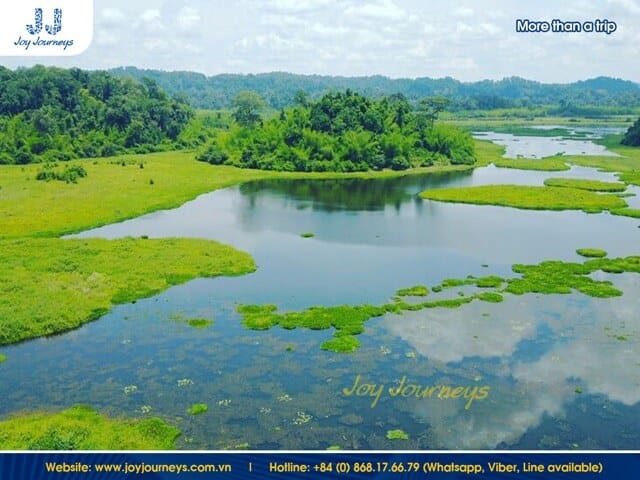
Nam Cat Tien - Dong Nai Cultural and Ecological Tourist Zone: This tourist zone offers a range of activities, including kayaking, fishing, and camping, as well as cultural experiences such as traditional music and dance performances.
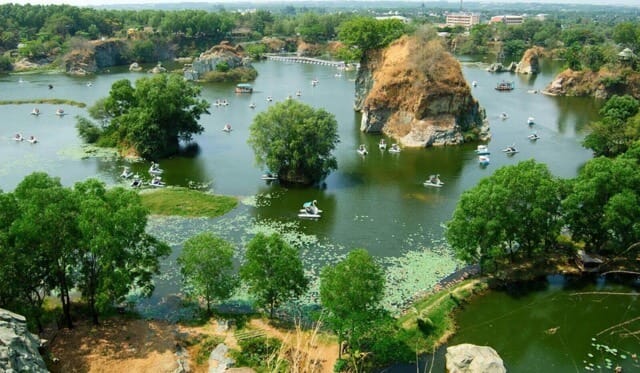
Dong Nai Cultural and Ecological Tourist Zone – Source: Collected - Ta Dung Lake: Ta Dung Lake is a magnificent freshwater lake in Dak Nong Province, Vietnam’s Central Highlands region. The lake is bordered by thick forests, rolling hills, and small villages, making it a popular destination for outdoor enthusiasts and nature lovers. Visitors can go trekking, camping, kayaking, fishing on the lake, or rest and enjoy the tranquil surroundings. Ta Dung Lake is best visited between December and February, when the weather is cold and dry, and the surrounding woodlands turn golden yellow, providing a stunning vista.
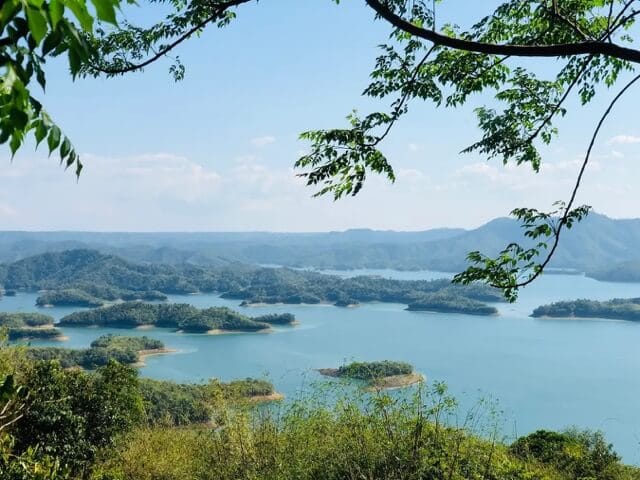
Ta Dung Lake – Source: Collected - Fishing: The Dong Nai River is home to various fish species, including catfish and snakehead fish, making it a popular destination for fishing enthusiasts.

Source: Collected - Hiking: The river is surrounded by lush forests and mountains, providing many opportunities for hiking and trekking.
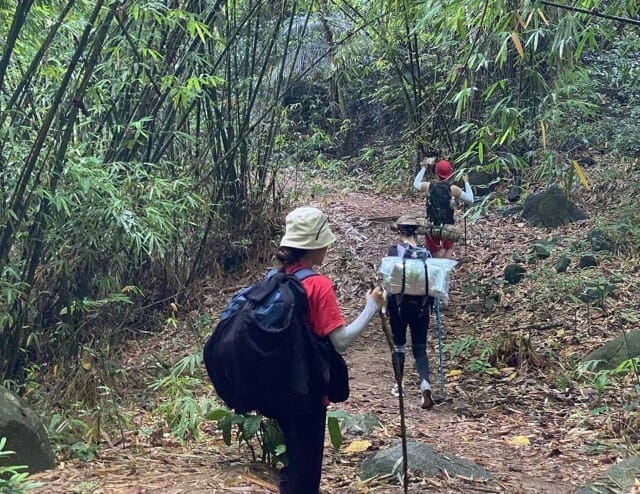
Source: Collected
The Dong Nai River offers many attractions and activities that cater to a wide range of interests, making it a must-visit destination for nature lovers and adventure seekers.
Get ready to discover Vietnam’s Perfume River on your adventure.
The Dong Nai River and Environmental Conservation
The Dong Nai River is a vital economic resource for Vietnam and a critical aspect of the region’s ecosystem. As a result, there is a growing awareness of the importance of conservation efforts to safeguard the river and its surroundings.
Pollution from industrial and agricultural operations is one of the most severe dangers to the Dong Nai River. The Vietnamese government has implemented diverse initiatives to address this issue, including stricter waste disposal restrictions and the promotion of sustainable farming techniques.
Another significant concern is the loss of biodiversity as a result of habitat damage and fragmentation. Several projects and programs have been launched to fight this problem and promote ecological sustainability while preserving the river’s natural beauty.
For example, the Dong Nai Biosphere Reserve was formed in 2012 to safeguard the area’s biodiversity and encourage sustainable development.
Many local community-led programs also focus on conserving the river’s natural beauty and teaching the public about the need for conservation.
For example, the Dong Nai River Clean-up campaign is a grassroots movement that organizes regular clean-up initiatives along the river to raise awareness about the environmental implications of pollution.
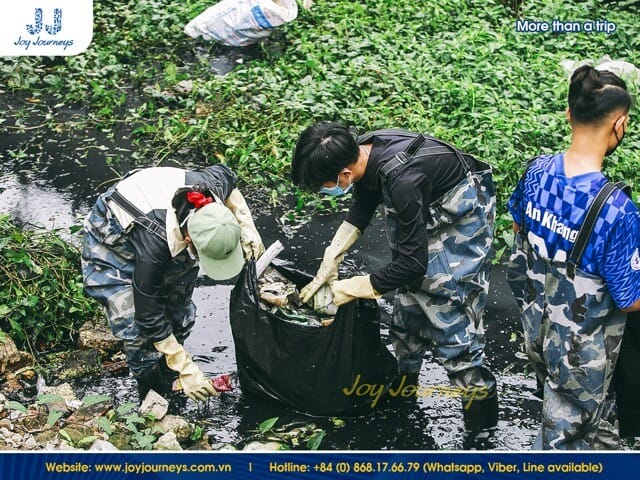
Furthermore, there is a growing trend towards ecotourism, which promotes sustainable tourism practices that minimize the environmental impact. Many tour operators offer eco-friendly tours along the river, showcasing the region’s natural beauty while raising awareness about the importance of conservation.
Environmental protection activities must be prioritized because of the Dong Nai River’s importance as a key resource and a gateway to Vietnam’s natural beauty. We can help guarantee that this vital resource remains intact for future generations by continuing efforts to protect the river’s natural beauty and promote sustainable practices.
Embark on a journey to explore the historical beauty of Vietnam’s Thu Bon River.
Conclusion
The Dong Nai River is a unique and essential aspect of Vietnam’s ecosystem and economy, providing visitors with different attractions and experiences. We invite readers to visit the river and support conservation efforts so future generations can enjoy it. Let us all work together to conserve this lovely and vital resource.


Related Posts
Saigon’s “Flower Market Replica”: Where To Find Them
Ho Chi Minh City’s floral charm is not limited to its bustling wholesale markets. Imagine wandering through a place where vibrant petals, fragrant blooms, and the spirit of traditional Vietnamese markets come alive—without the overwhelming crowds. A flower market replica captures that magic, blending the beauty of fresh flowers with the charm of a curated, […]
Is it Safe to Travel to Vietnam Right Now? A Complete 2025 Guide
Vietnam has emerged as one of Southeast Asia’s most captivating destinations, drawing millions of visitors annually with its rich culture, stunning landscapes, and incredible cuisine. However, many travelers still ask: Is it safe to travel to Vietnam right now? This comprehensive guide provides you with everything you need to know about Vietnam travel safety in […]
Ho Chi Minh Cu Chi Tunnels Tour: The Ultimate Guide
The Cu Chi Tunnels stand as one of Vietnam’s most remarkable historical sites, offering visitors a profound glimpse into the ingenuity and resilience displayed during the Vietnam War. For travelers, a Ho Chi Minh Cu Chi tunnels tour represents an essential experience that combines education, adventure, and deep cultural understanding. This comprehensive guide will help […]